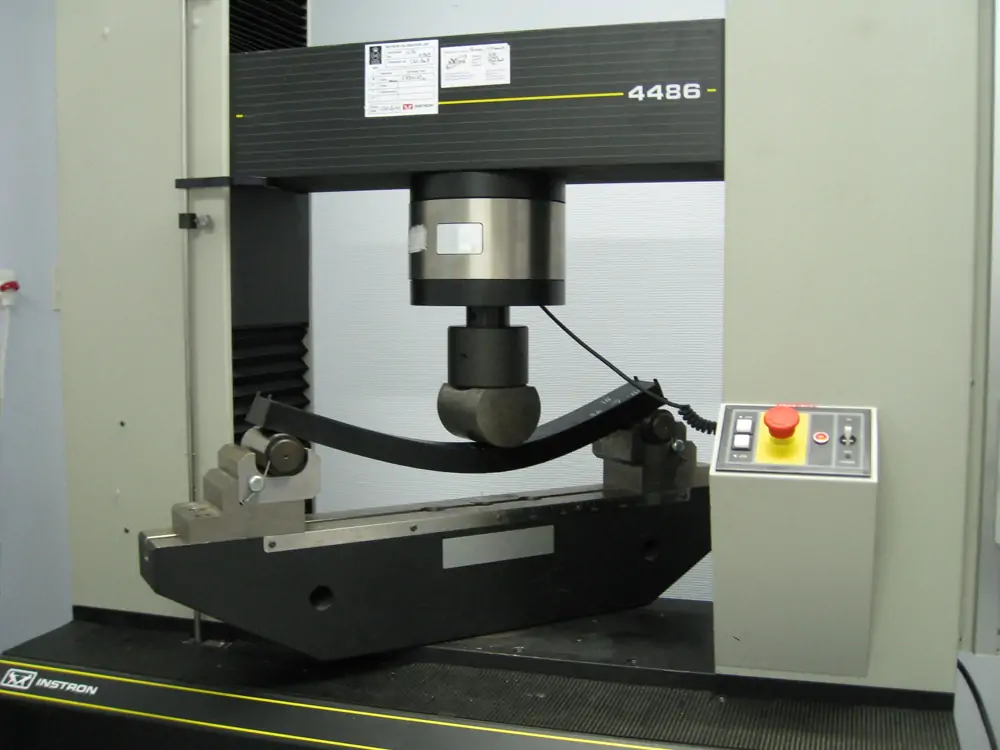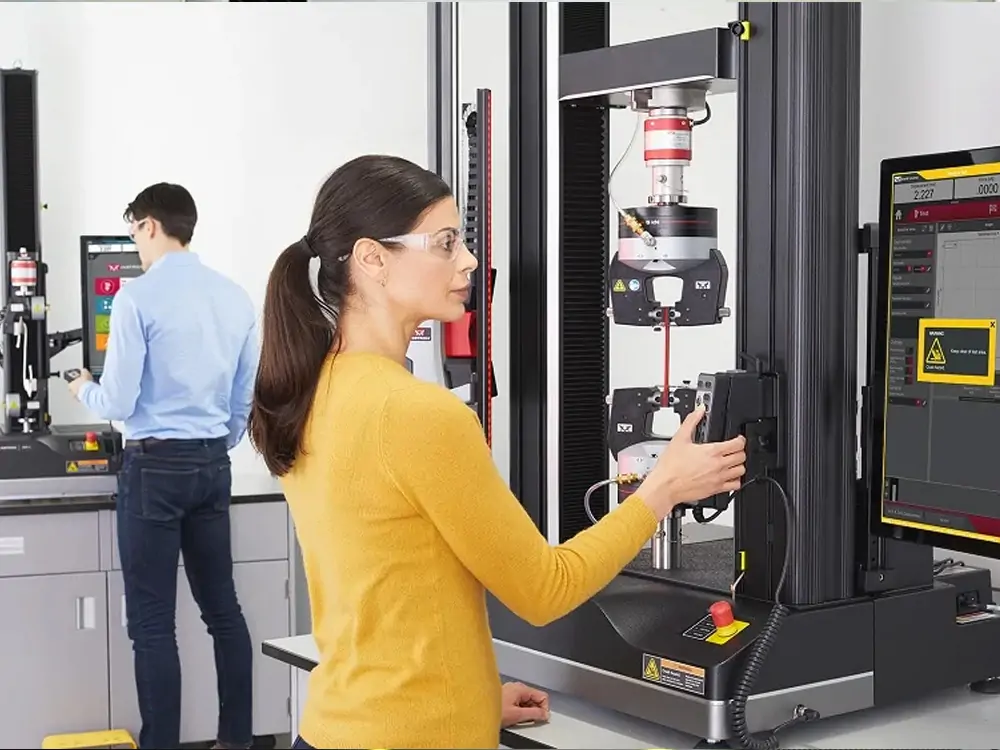The world of materials now includes many thousands of different materials. These include metals, plastics, and even ceramic materials. They are used to construct almost everything that humans use. However, ensuring that any new materials that are produced meet the required standards is necessary. To do this, it is essential to test materials to specific standards.
Choosing a suitable universal testing machine (UTM) is essential for conducting accurate and reliable material and component tests in various industries, including manufacturing, construction, aerospace, and more. When considering a new universal testing machine, several vital criteria will help define the equipment that is the most appropriate for you. Consider the following factors to select the right UTM for your specific needs.
4 Factors When Choosing A Suitable Universal Testing Machine
Choosing a universal test machine is usually based on four specific factors that the user requires. These are the below factors.
Expected Test Materials
A sturdier machine will be needed to test metal samples than polymer materials. Most universal testing machines have functions that streamline testing for particular materials. Most setups, for instance, may display adhesive strength per unit width by automatically averaging peel strength data over a user-specified distance. There are specialized grips and fittings for conducting peel and shear strength tests. Such as the 90-degree and climbing drum peel fixtures. Similarly, tensile testing equipment may feature a customized gripper accommodating various material thicknesses. Different tests may require additional machines.
Type of Test Required
Adhesion pull tests generally require smaller capacity machines than tensile or compression tests. Many tests can be carried out using universal test equipment. These include fatigue tests, puncture tests, hearing tests, torsion tests, and the more standardized tests. Each test requires specialized headstocks and fittings to support the tested materials. In addition, because of the bespoke nature of each test, the machine software needs to be aligned with the tests that will be carried out. The requirements of the axial-torsion test are markedly different from the bending tests. If the software is perfectly aligned, the results will be balanced.
Test Standards
Almost all testing is carried out to align with international standards. These will influence the choice of UTM. There are a vast number of tests that materials can be tested for, including:
- ASTM A370 – Standard Test Methods and Definitions for Mechanical Testing of Steel Products.
- ASTM C39 – Standard Test Method for Compressive Strength of Cylindrical Concrete Specimens.
- ASTM C39 – Standard Test Method for Compressive Strength of Cylindrical Concrete Specimens.
- ASTM D751 – Standard Test Methods for Coated Fabrics.
There are currently over 800 standards for materials testing. It covers everything from tensile tests in aluminum to peel testing of bark on natural wood. Each is highly specific and carries exacting test criteria and sample preparation details. When choosing a universal testing machine, the user must determine what kind of testing they want to carry out and select equipment, including headstocks, that is appropriate. Most universal test machines are multi-functional, so it may be necessary for the user to carry a range of headstocks.
Machine Capacity
This is allied to the materials being tested, and if vital, the capacity will need to be much greater than if testing lightweight materials. Investigating the load measuring system as a purchase point is always advisable. Most universal testers feature a pendulum dynamometer device. It consists of a tiny cylinder with a piston that travels in sync with the steady flow of oil. The piston is attached to the pendulum by a pivoting lever. As force is applied to the sample, the pivot lever bends. The amount of load shown on the dial is based on this deflection. The load measuring unit has a dial. It allows users to change the application’s magnitude from 0 to 100 kN, 250 to 500 kN, and 1000 to 1,000,000 kN. The precision of the machine as a whole is determined by the precision of its measurement unit. Precision UTMs usually can cover a relatively small force range but can do so with very high accuracy. This is why it is essential to determine the loads and accuracy needed before purchase.

Considering Features of A Universal Testing Machine
In addition to the basic requirements, universal test equipment should have several inherent features. UTMs tend to have a strong top and bottom cross-piece that can move the substantial side members up and down. It makes the machine ideal for applying pressure to different materials. To do this effectively, the device should have several interlinked components separate from the strongly built frame.
Access to the machine and all necessary functions must be considered when choosing and positioning a UTM. Primarily, the operation of the machine needs to be entirely safe for both the machine itself and anyone in the area. It is usually recommended that there be at least a five-foot area around every side of the machine that is clear. It means that larger machines will need a substantial area to be in. It is also recommended that the machine be firmly bolted to the concrete floor it stands on.
The system needs to have a hydraulic control system, which needs to be localized. This part comprises an oil pump that supplies steady oil flow into the primary cylinder of the load unit. It does not pulsate the oil flow. This flow contributes to the load being smoothly applied to the specimen. An electrical motor and a sump power the oil pump in a hydraulic power unit. Electrical or hydraulic power might be used to supply force via the controllers.
It is essential to consider all these areas when choosing a universal testing machine. A company’s product needs to fit its needs, power, capabilities, usability, and safety features. It usually means visiting a company’s website and assessing the right tool for the intended uses. Doing that will ensure the user gets the best possible service and a UTM ideal for their needs.

Other Considerations When Choosing A Suitable Universal Test Machine
In addition to the four factors we must consider above, there is also some other information that needs to be considered. Once you consider these factors and gather the necessary information, you can make an informed decision when choosing the suitable universal testing machine for your needs.
Speed And Travel
Consider the required test speed and stroke length (the distance the crosshead can move). Some tests require high-speed testing, while others require slower, controlled deformation.
Accuracy And Precision
Evaluate the machine’s accuracy and precision in force and displacement measurements. Make sure it meets your testing standards.
Control And Data Collection
Check control systems and data collection capabilities. Look for user-friendly software, real-time data monitoring, and the ability to save and export test results.
Fixture Compatibility
Check that the universal testing equipment is compatible with the various jigs, fixtures, and accessories required for your specific testing.
Security Features
Ensure the machine has adequate safety features such as emergency stop buttons, overload protection, and safety guards.
Environmental Conditions
Consider the operating environment, including temperature and humidity. Certain materials testing may require controlled environmental conditions.
Floor Space
Assess the available space in your lab or testing area and select a UTM that meets these constraints.
Budget
Determine your budget for purchasing a universal test machine. Keep in mind that cheaper models may need more advanced features and precision.
Brand And Reputation
Research reputable UTM manufacturers and consider their track record, customer support, and warranty.
Calibration And Maintenance
Understand machine calibration and maintenance requirements. Regular calibration is essential to ensure accurate results.
Training And Support
Evaluate the availability of training and technical support the manufacturer or dealer provides.
Future Expansion
Consider whether you need to upgrade or expand your testing capabilities in the future. Some UTMs allow attachments and customization.
Compliance And Certification
Ensure universal testing machines comply with relevant industry standards and certifications, such as ISO or ASTM.
User Experience
Test the machine or get user feedback to evaluate its usability and ergonomics.
Comments And References
Seek reviews and references from other users or industry experts to glean insights about UTM performance and reliability.

Conclusion
When choosing a suitable universal testing machine, it is essential to understand your needs, budget, and application area. Different testing machines have their characteristics and advantages. So, before making a decision, it’s crucial to make sure you fully understand your needs, consult with the manufacturer, and consider the performance parameters of different models. Whether you work in materials testing, quality control, or R&D, choosing a suitable universal testing machine can provide powerful support.
Selecting a suitable universal testing machine can take some time and effort. But it will positively impact your work and provide reliable results for your experiments and tests. This article will help you find the best testing machine among the many available options.